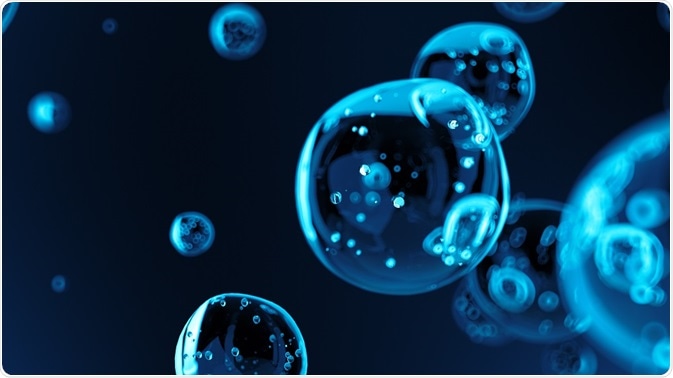A bioorthogonal reaction is a reaction within a living system that does not interfere or interact in any way with native biochemistry of the system. The phrase ‘bioorthogonal’ was coined in 2003, and bioorthogonal chemistry is now widely used to study biomolecules in living systems.

Pavel Chukhov | Shutterstock
The functional groups participating in the reaction are inert to biologically active molecules, and reactive selectively with each other. The chemistry of the reaction must also be nontoxic to the organism.
Ideally, the functional groups involved in the reaction are small enough not to disrupt the structure or function of the biomolecules they are attached to. Challenges in the development of bioorthogonal reactions include stability of reactants and products in water, kinetics, and side reactivity. The reaction also must be tested in conditions matching the intended cellular environment.
Bioorthogonal chemistry can be used to study aspects of biological systems for which traditional biochemical and/or molecular biological methods have been inadequate. Those include studies of biomolecules like glycans, lipids, and metabolites and the processes surrounding them.
How are bioorthogonal reactions designed?
A bioorthogonal study usually has two steps. First, a bioorthogonal functional group is added to a metabolic substrate, a small molecule ligand, or an enzyme inhibitor; then the resulting complex is introduced into a living system. Next, the molecule reacts with a functionalized probe within the system.
The design of bioorthogonal reactions is a challenge in the field of chemistry. The reaction must form a stable, covalent bond between two functional groups that are otherwise completely inert within the system, as well as non-toxic. Its kinetics must be rapid so that it forms product at a reasonable rate – even when concentrations are low. Finally, it must have appropriately fast kinetics in the physiological range of pH and temperature values.
Early bioorthogonal chemistry discoveries
One of the first bioorthogonal reactions was developed by Bertozzi and his colleagues in a study of cell surface N-glycoprotein labeling. They found that N-levulinoyl-mannosamine was an acceptable substrate for the CMP-sialic acid biosynthesis reactions in mammalian cells.
Modified CMP-sialic acids were then transferred by sialic acid transferases to N-glycoprotein chains and moved to the cell surface. In the next step, a ketone moiety on the levulinoyl group reacts with a fluorescently tagged hydrazide in a bioorthogonal manner.
The Bertozzi group subsequently showed that they could achieve the same reaction with higher efficiency by incorporating an azide group followed by reaction with biotin phosphane. This reaction is called the Staudinger-Bertozzi ligation.
Another bioorthogonal reaction makes use of a copper(I)-catalyzed azide-alkyne cycloaddition - or “click reaction” - which utilizes an azide or alkyne group on the target biomolecule. The group subsequently reacts with a reporter molecule, usually a biotinylated or fluorescent azide or alkyne. In a nutshell, click reagents eliminate the need for a copper catalyst.
Thus far, only a handful of true bioorthogonal reagents have been discovered. Nonetheless, the development of bioorthogonal reagents is expected to enable deeper and more accurate studies of systems in living organisms. The requirements for bioorthogonal reactions are quite strict, but some chemical reactions hold promise for use as true bioorthogonal reagents.
Further Reading